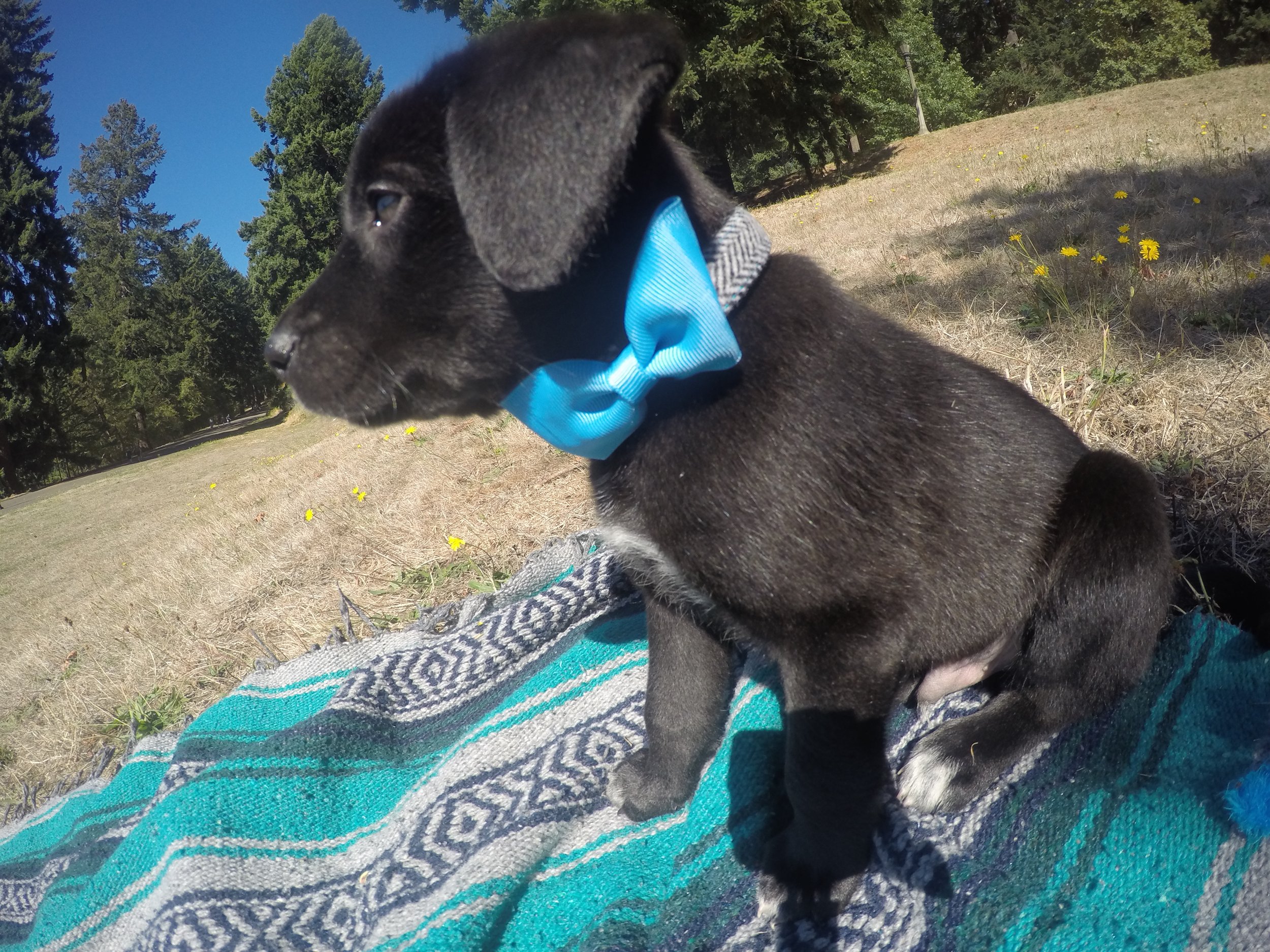3 Things I Wish I Did Differently When My Dogs Were Puppies
As Jaxon enters senior doghood... * pass me the tissues *…. I can’t help but reflect on the crazy times we endured during his and Opal’s puppy years.
I had family dogs growing up and worked with dogs in various settings for about 4 years by the time I adopted Jax, and I was still ill-equipped for puppy ownership. I adopted Jax 3 years before becoming certified as a professional dog trainer and Opal 2 years prior, so there are things I tell my clients now that I personally did not practice with them. How does that saying go, “Do as I say, not as I do”?
I've learned a lot from working with dogs and other professionals over the years. Here are the 3 things I wish I did differently with my dogs when they were puppies:
1. Never Let Them Jump Up On Me:
When my dogs were puppies, I thought it was cute when they jumped up on me to say hello. However, as they grew bigger and stronger, it became a problem. And they didn’t understand why it was suddenly not okay. This has been the most difficult behavior to train… stop jumping up on my guests. It’s still a work in progress!
If I could go back in time, I would have trained my dogs from the beginning to keep all four paws on the ground when greeting people. This can be done through positive reinforcement training, rewarding them for sitting or standing calmly when people approach. It's important to be consistent and not reinforce jumping behavior, even when it's cute or seems harmless.
2. Utilize Crate Training:
When I first got my dogs, I didn't fully understand the benefits of crate training. After one horrible night’s sleep, I gave up on the crate. But I never set my dogs up for success by introducing them to their crates before shoving them in, no wonder they did horribly in them!
After coming home to chewed-up furniture and other household items for the first 3 years of their lives, I realized the value of giving my dogs a safe, comfortable space of their own AND how important it is to start a dogs world very small and gradually increasing their freedoms as they are ready.
Crate training can be a great tool for helping dogs feel secure and comfortable when left alone or at night. It also helps prevent destructive behavior and can be used to aid in potty training. It's important to introduce the crate gradually and make it a positive experience, using treats and toys to make it a comfortable and enjoyable place for your dog to be.
3. Seek Out Professional Help For Deep-Rooted Issues:
When Opal began to show signs of fear and anxiety, I tried to handle it on my own. Especially after becoming a professional dog trainer. My ego got in the way and prolonged me from reaching out to my vet and other trainers. “I can handle this on my own! I’m a trainer after all!”
I wish I would have sought out other positive reinforcement dog trainers for support or a veterinary behaviorist sooner, to help me understand and address Opal's emotional needs and diagnose her neurological disorder sooner.
If your dog is exhibiting signs of fear or anxiety, such as shaking, pacing, or avoiding certain situations or people, it's important to seek out professional help. Opal first showed signs of this around 6 months old.
Positive reinforcement training can help address these issues and help your dog feel more confident and comfortable in their environment. Working with a vet can help you ensure there are no underlying health concerns causing these behavioral issues, along with prescribing medication to help their quality of life in more severe cases.
If you have a new puppy and are experiencing difficulty in any of the areas above, don’t hesitate to reach out! My main goal with Wagging Victories is to help keep dogs out of shelters due to behavioral issues. Contact me here! Or check out my step-by-step guide, “Life With A Puppy”.




